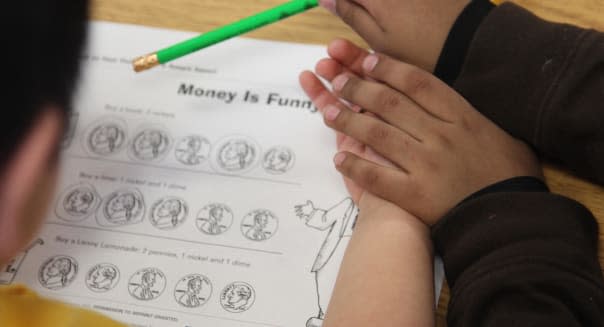The Scary State of Financial Literacy in America

Only 40 percent of adults keep a budget and track their spending. Three-fourths of American families say they live paycheck to paycheck. More than one-fourth of American families have no savings at all. These troubling statistics are some of the reasons that we need to boost financial literacy.
Being financially literate means you understand how to manage money, how money works in real-world applications, and how you can use money as a tool to help others and grow your own stability and security. Studies from organizations like the Jump$tart Coalition indicate that the average American doesn't have enough financial education -- or at least doesn't understand how to apply this knowledge in the real world.
A Lack of Financial Literacy Creates a Big Problem
This has serious consequences. Look at our consumer debt problem. Collectively, American consumers owe $11.52 trillion to lenders and creditors. This debt burden balloons year after year. Last year alone student loan debt soared by more than 11 percent. The result is that many Americans fear for their financial stability and freedom. Only 50 percent of American families have more than three months' worth of expenses saved. Nearly as many –- 43 percent –- are concerned that their savings won't be enough to cover unexpected costs or emergencies.
%VIRTUAL-article-sponsoredlinks%Americans feel uncertain about their ability to retire -- and for good reason. Statistics compiled by LearnVest and Chase Blueprint show what Americans, divided by age group, have saved for their retirement. For those 45 to 54, the median saved was only $101,000. It's no wonder that 38 percent of adults are concerned about being able to retire on time, if they'll be able to retire at all.
The good news is that efforts to raise awareness for financial literacy seem to be working. Three-quarters of American adults would like help with basic money matters and would appreciate the advice of a professional.
Most adults wish they had financial coursework. Only 5 percent say they were taught about money by a teacher, and 40 percent say they would give themselves C's, D's and F's on their grasp of personal finance concepts. A full 85 percent of American parents believe that financial education courses should be a requirement for high school graduation. And 52 percent of teenagers want to learn more about money, and they're most interested in budgeting, saving and investing.
What You Can Do Today to Increase Your Financial Literacy
We may be a long way from seeing approved financial education classes in public schools, but a wealth of information is available online. You can become more financially literate, and more prepared to deal with your finances, if you're willing to do a little research.
Get your finances in order. It's hard to know where to go if you don't know where you're starting. Make a budget and track your spending; cut frivolous expenses and make sure you're money is going to things you truly value (and not stuff you think you have to have because everyone else does).
Make a plan to pay off any student loans or credit card debt and try to max out your retirement contributions if you can. Even if you can't make that happen today, it's a great goal to set for yourself –- and goals help keep your finances on track.
Keep up the savings and investing habit once you've established it. And don't stop learning. By continuing to educate yourself, it will be easier to build financial security for you and your family.
Sophia Bera is a financial planner for Millennials and the Founder of Gen Y Planning. You can sign up for her newsletter here to receive more money tips for Millennials.

